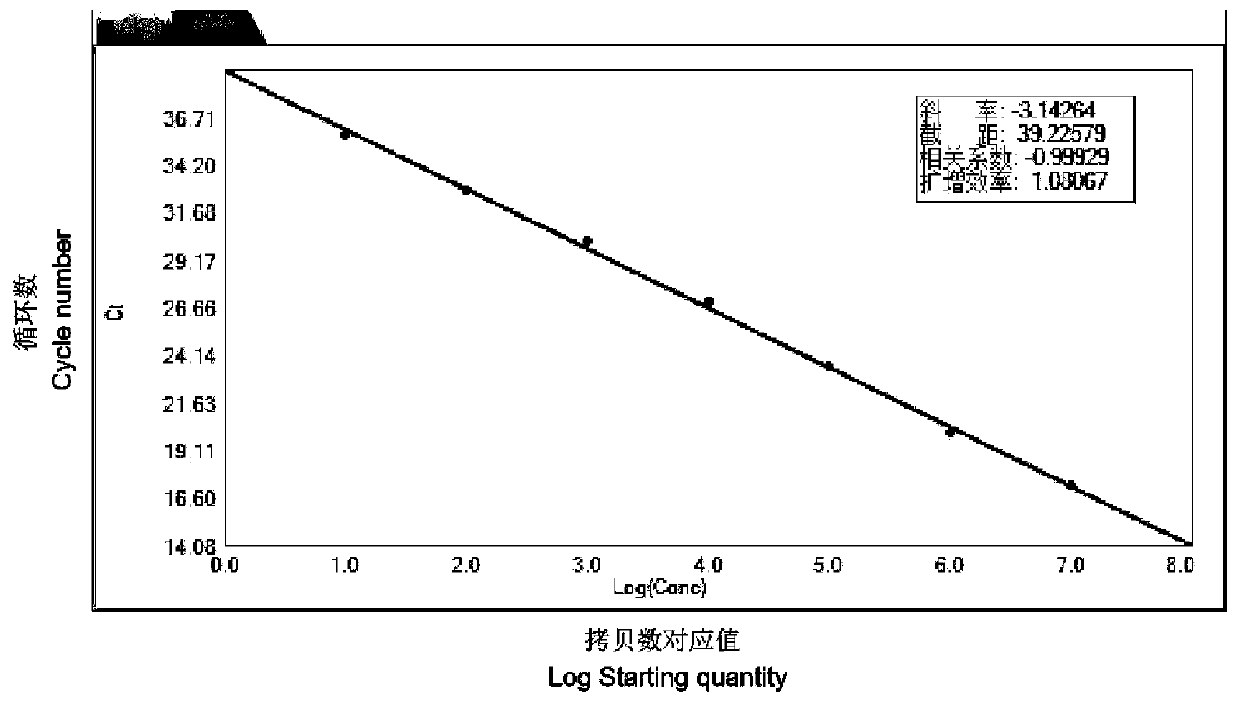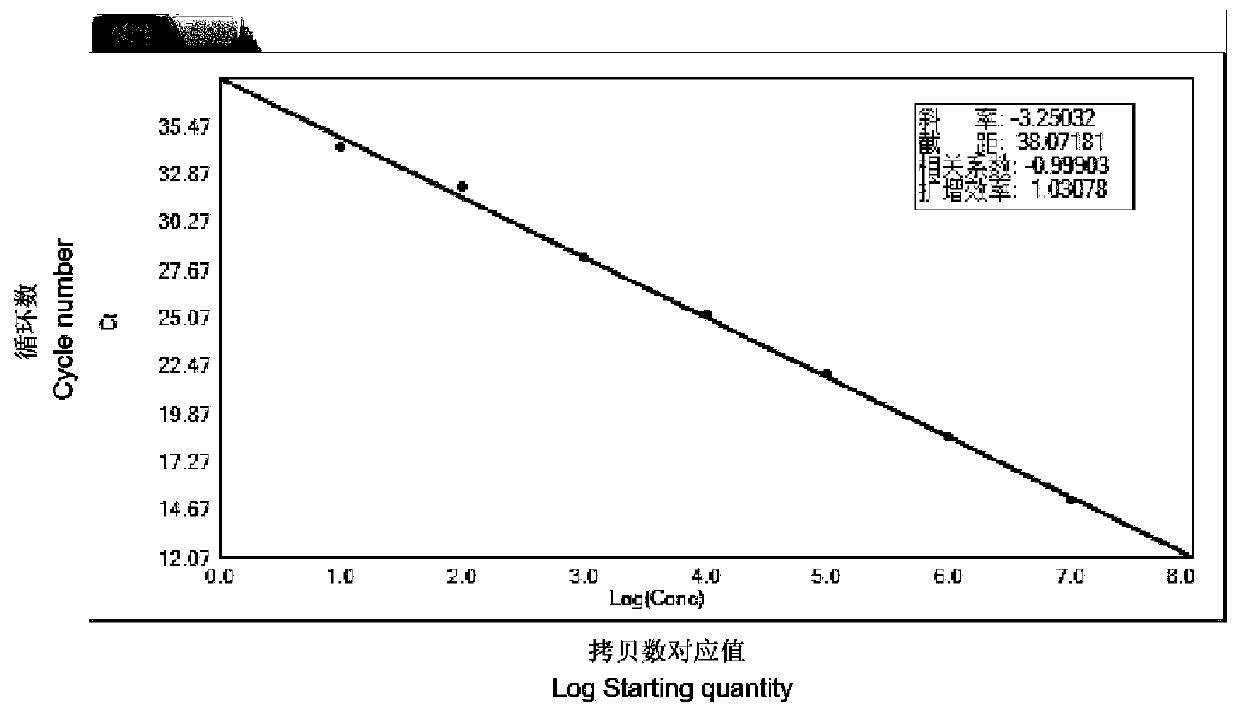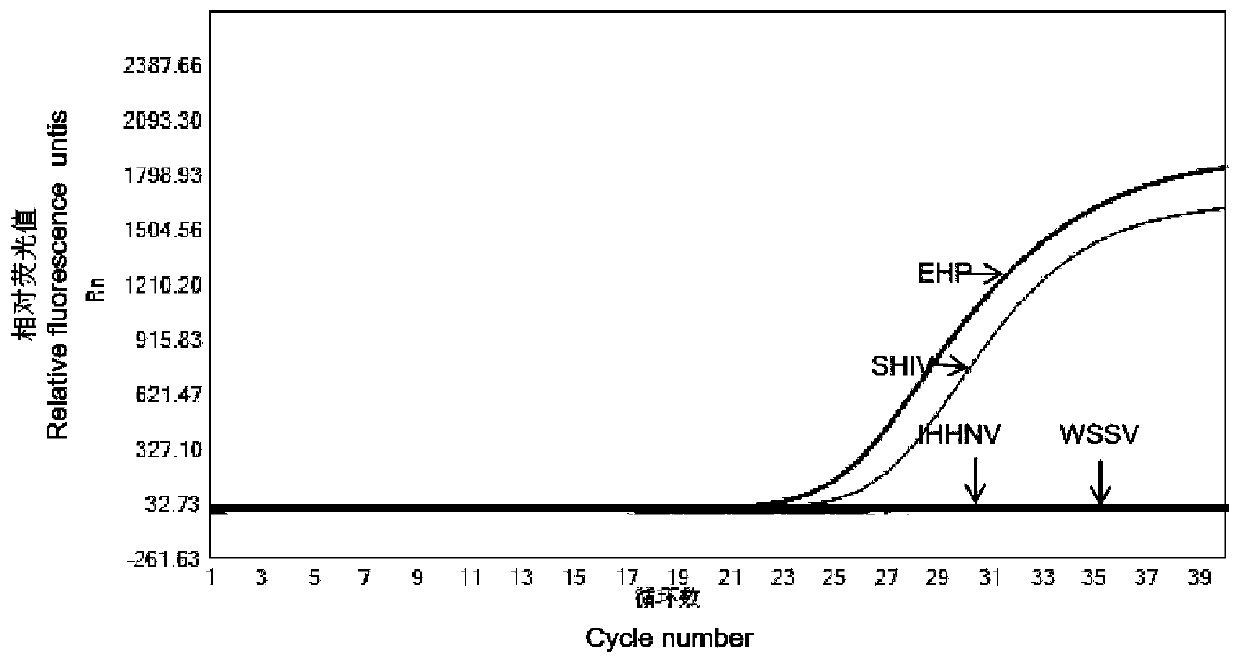EHP and SHIV dual real-time fluorescent quantitative PCR detection primer and probe combination and kit
A real-time fluorescent quantitative, primer-probe technology, applied in recombinant DNA technology, microbial assay/inspection, microorganisms, etc., can solve the problem of long time-consuming detection, and achieve the effect of improving sensitivity and accuracy and reducing time-consuming.
- Summary
- Abstract
- Description
- Claims
- Application Information
AI Technical Summary
Problems solved by technology
Method used
Image
Examples
Embodiment 1
[0034] 1. Viral nucleic acid extraction
[0035] Get diseased shrimp tissue (hepatopancreas, gills, intestinal tract, muscle), carry out homogenization process, obtain tissue homogenate, specific method is as follows:
[0036] 1) First add about 3 steel balls into the 2mL homogenate tube, 1 large steel ball (4.5mm in diameter) and 2 small steel balls (2.5mm in diameter);
[0037] 2) Take about (100 mg) diseased shrimp tissue (hepatopancreas, gills, intestines, muscles) into the tube, and add 500 μL PBS;
[0038] 3) Place the homogenization tube in a tissue homogenizer for homogenization for 1 min;
[0039] 4) Freeze the tissue homogenate at -40°C for at least 30 minutes, then return it to room temperature to dissolve, repeat freezing and thawing 2 to 3 times, and put it in a tissue homogenizer for homogenization once each time;
[0040] 5) Centrifuge at 10,000×g for 5 minutes, transfer about 200 μL of the supernatant to a 1.5 mL centrifuge tube, numbered for future use.
[...
Embodiment 2
[0056] specificity test
[0057] Using the extracted nucleic acids of SHIV, EHP, infectious hypodermal and hematopoietic necrosis virus (IHHNV) and white spot syndrome virus (WSSV) as templates, PCR was carried out according to the method established by the standard curve. Amplify to verify its specificity.
[0058] Using the genomes of SHIV, EHP, IHHNV and WSSV as templates for real-time fluorescent quantitative PCR amplification, the results showed that only the corresponding fluorescent signals of SHIV and EHP were positive, and the detection of other viruses were negative, indicating that the constructed The dual real-time fluorescent quantitative PCR method has strong specificity ( image 3 ).
Embodiment 3
[0060] Sensitivity test The template with the determined DNA concentration was serially diluted 10 times, and the sensitivity was determined by the established dual real-time fluorescent quantitative PCR method.
[0061] Measure the concentration of DNA standard products of SHIV and EHP with a nucleic acid protein detector, calculate their copy number, and then carry out 10-fold serial dilution to obtain 1×10 7 copies / μL~1×10 1 copies / μL, using SHIV and EHP dual real-time fluorescence quantitative amplification established in this study, and obtained the kinetic amplification curve of SHIV and EHP probe method real-time fluorescent quantitative PCR ( Figure 4 ), the minimum amount of DNA that can be detected in the range of Ct Figure 5 , 6 ).
PUM
| Property | Measurement | Unit |
|---|---|---|
| Diameter | aaaaa | aaaaa |
| Diameter | aaaaa | aaaaa |
Abstract
Description
Claims
Application Information
 Login to View More
Login to View More - R&D
- Intellectual Property
- Life Sciences
- Materials
- Tech Scout
- Unparalleled Data Quality
- Higher Quality Content
- 60% Fewer Hallucinations
Browse by: Latest US Patents, China's latest patents, Technical Efficacy Thesaurus, Application Domain, Technology Topic, Popular Technical Reports.
© 2025 PatSnap. All rights reserved.Legal|Privacy policy|Modern Slavery Act Transparency Statement|Sitemap|About US| Contact US: help@patsnap.com



